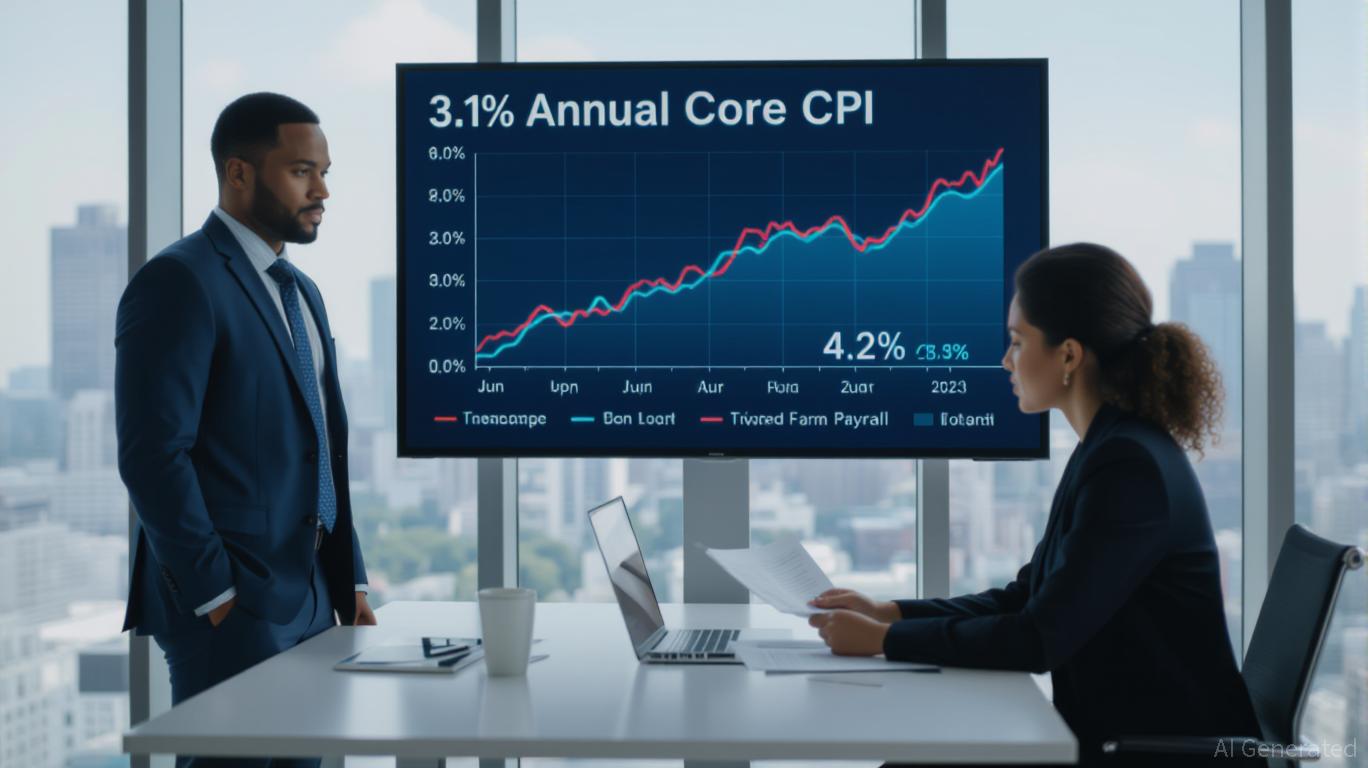
The Federal Reserve’s September 2025 meeting has become a focal point for investors, policymakers, and economists alike. With inflation stubbornly above the 2% target, a slowing labor market, and intense political pressure, the Fed faces a complex calculus. This article dissects the interplay of inflation dynamics, labor market resilience, and political forces to assess the likelihood of a rate cut—and its potential magnitude.
Inflation: A Peak in Core CPI, but Tariffs Loom
The July 2025 CPI report revealed a 2.7% annual increase in the all-items index, slightly below expectations, while core CPI surged to 3.1%, the highest since February 2025. This divergence underscores the Fed’s dilemma: energy prices have fallen sharply (down 1.6% year-over-year), but tariffs are beginning to manifest in goods like household furnishings (+0.7% monthly) and apparel (+0.1%). Economists like Mark Zandi of Moody’s warn that core goods inflation could peak at 3.8% by year-end as tariffs amplify costs.
The Bureau of Labor Statistics (BLS) faces credibility challenges, with methodological shifts and staffing cuts raising questions about data reliability. However, the core CPI’s trajectory—driven by shelter costs (+3.7% year-over-year) and medical care (+3.5%)—suggests inflation is not yet under control. The Fed’s preferred PCE index, which rose 2.5% in Q2 2025, remains a critical benchmark.
Labor Market: Resilience with Cracks
The July 2025 unemployment rate held at 4.2%, but the data tells a more nuanced story. Nonfarm payrolls added just 73,000 jobs, far below the 110,000 expected, with May and June figures revised downward by 258,000 combined. The labor force participation rate fell to 62.2%, its lowest since 2022, and the U-6 unemployment rate rose to 7.9%.
Health care and social assistance sectors accounted for most job gains, while federal employment continued to decline. Wage growth, at 3.9% annually, remains moderate but could erode if hiring slows further. The labor market’s resilience is evident, but the downward revisions and participation drop signal early-stage cooling.
Political Pressures: A Battle for Policy Direction
The Trump administration has escalated demands for a rate cut, with the president publicly criticizing Fed Chair Jerome Powell as “too late” and linking the Fed’s independence to broader economic goals. The administration’s One Big Beautiful Bill Act (OBBA) includes tax cuts, but its stimulative impact is limited. Instead, Trump’s focus on lower rates reflects a desire to reduce borrowing costs for government debt and counteract tariff-driven inflation.
Internally, the FOMC is divided. Hawks like Christopher Waller and Michelle Bowman have already advocated for a July cut, while doves like Raphael Bostic and Jeff Schmid prefer to wait. The political climate adds pressure, but the Fed’s mandate—price stability and maximum employment—must ultimately guide its decision.
The Fed’s Dilemma: Data vs. Politics
The Fed’s September decision hinges on three factors:
1. Inflation Persistence: If core CPI peaks at 3.8% as predicted, the Fed may tolerate a temporary overshoot.
2. Labor Market Softness: A 4.2% unemployment rate with weak job growth could justify easing.
3. Political Leverage: While the Fed is independent, the administration’s public criticism risks politicizing its decisions.
A 25-basis-point cut in September is likely, with a second cut in October if October CPI data shows moderation. However, a 50-basis-point move is unlikely without a sharper labor market downturn.
Investment Implications
Investors should prepare for a Fed pivot:
– Equities: Sectors sensitive to borrowing costs (e.g., tech, housing) may outperform. Tesla’s stock, for instance, could benefit from lower rates, though shows volatility tied to macroeconomic shifts.
– Fixed Income: Yields on 10-year Treasuries may dip below 3.5% as rate-cut expectations rise.
– Commodities: Gold and copper could act as hedges against inflation persistence.
– Currencies: The U.S. dollar may weaken against the euro and yen if global central banks diverge in policy.
Conclusion
The Fed’s September meeting is a pivotal moment. While inflation remains a concern, the labor market’s cracks and political pressures tilt the odds toward a rate cut. However, the magnitude will depend on whether the Fed prioritizes inflation control or labor market support. Investors should adopt a balanced approach, favoring rate-sensitive sectors while hedging against inflation risks. The path forward is uncertain, but one thing is clear: the Fed’s independence is being tested in real time.
